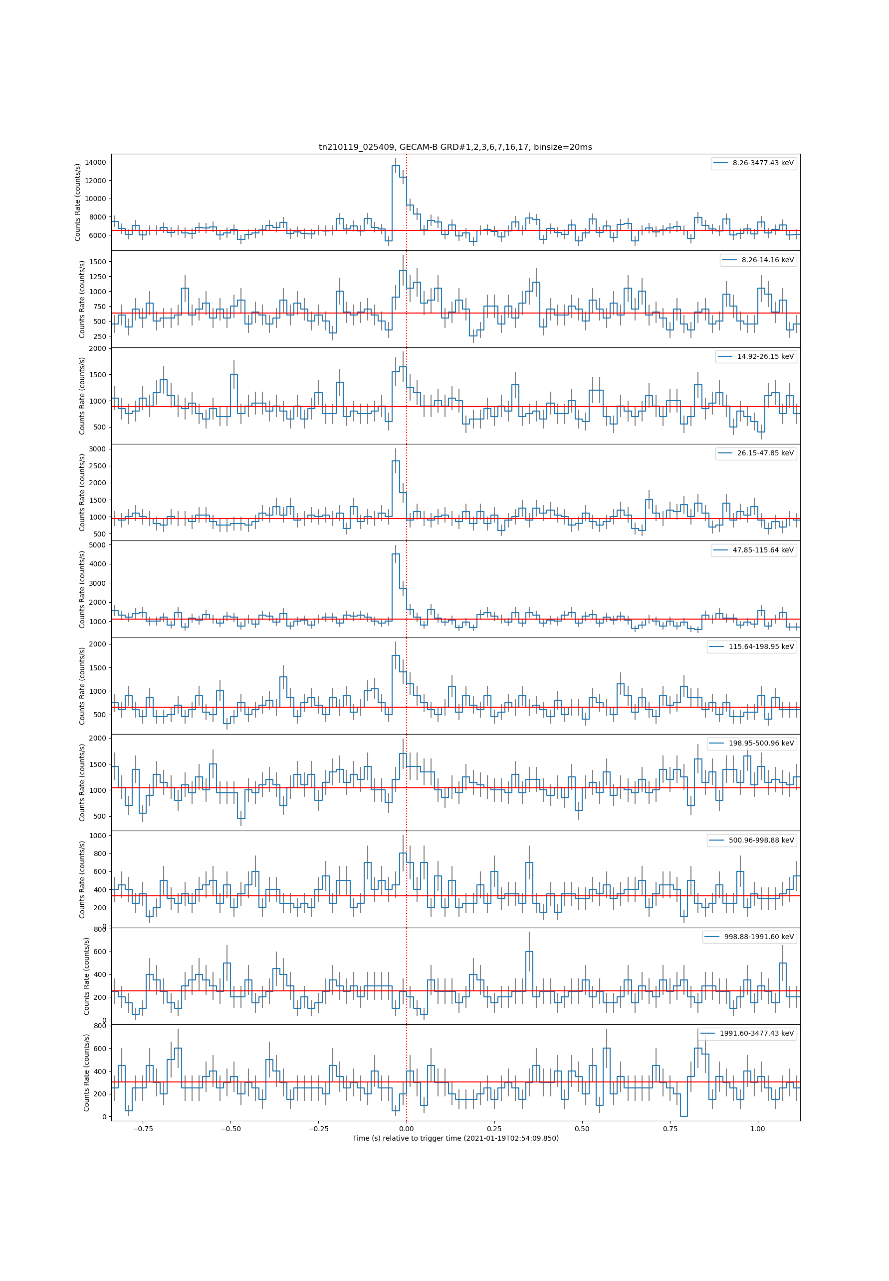GECAM Team Reports First Detection of Gamma-ray Transients
In the early morning of Jan. 20 (Beijing Time), the Gravitational wave high energy Electromagnetic Counterpart All-sky Monitor (GECAM or Huairou-1) team reported their first detection of a gamma-ray transient (GRB 210119A) in the Gamma-ray Coordinates Network (GCN) (see GCN circular #29331, https://gcn.gsfc.nasa.gov/gcn3/29331.gcn3). With this achievement, GECAM is now part of the global efforts to observe gamma-ray transients in the multi-wavelength multi-messenger astronomy era.
At 2021-01-19T02:54:09.850 (UTC), GECAM-B, a GECAM mission satellite, was triggered by a short gamma-ray transient, i.e., a sudden increase in gamma-ray photons from a celestial object. Although the GECAM satellites are in the commissioning phase, the observation data were downloaded and analyzed in a timely way, thanks to great support from the GECAM operations team.
According to the radiation in wide energy bands observed by GECAM-B (Fig. 1), this burst lasted about 50 ms and was classified as a short gamma-ray burst (GRB 210119A). It could have been produced by the merger of two compact stars, such as a neutron star or black hole. Such a binary merger would not only produce gamma-ray flashes but also gravitational waves detectable by gravitational wave detectors. At the same time, this burst might have come from a new magnetar (Swift J1851.2-6148) in our Milky Way, which can emit elusive radio signals called Fast Radio Bursts (FRB).
GECAM's detection capability in the low-energy band shows that the low-energy emission from this burst behaved distinctively from high-energy photons. In addition, this burst was not only localized with GECAM-B data, but also jointly localized using data from GECAM-B, Insight-HXMT/HE and Fermi/GBM (Fig. 2). Both location results are consistent with the accurate position given by Swift/BAT within the margin of error. These results demonstrate the detection and localization capability of GECAM.
The GECAM project is funded and implemented by the Chinese Academy of Sciences, and consists of two small satellites (GECAM-A and GECAM-B), which were launched on Dec. 10, 2020 at 04:14:37 a.m. (Beijing Time) from the Xichang Satellite Launch Center. Since it began observation last December, GECAM has detected various high-energy transients including gamma-ray bursts, Earth occultation of Scorpius X-1, X-ray pulsars, solar flares and high-energy cosmic ray events.


Contact Information
Mr. GUO Lijun
ljguo@ihep.ac.cn

